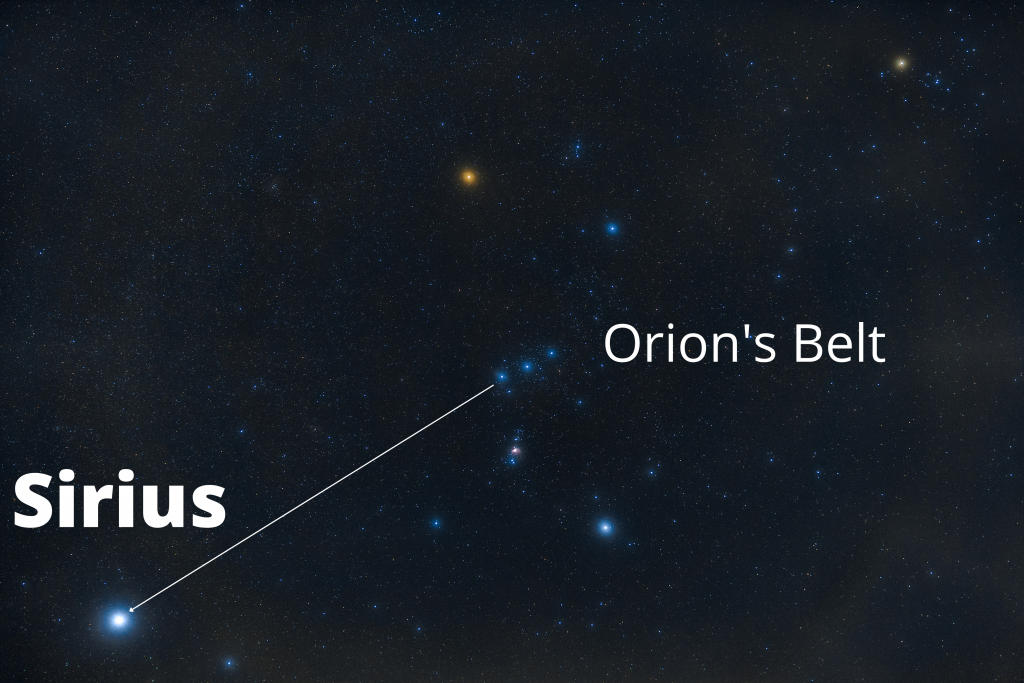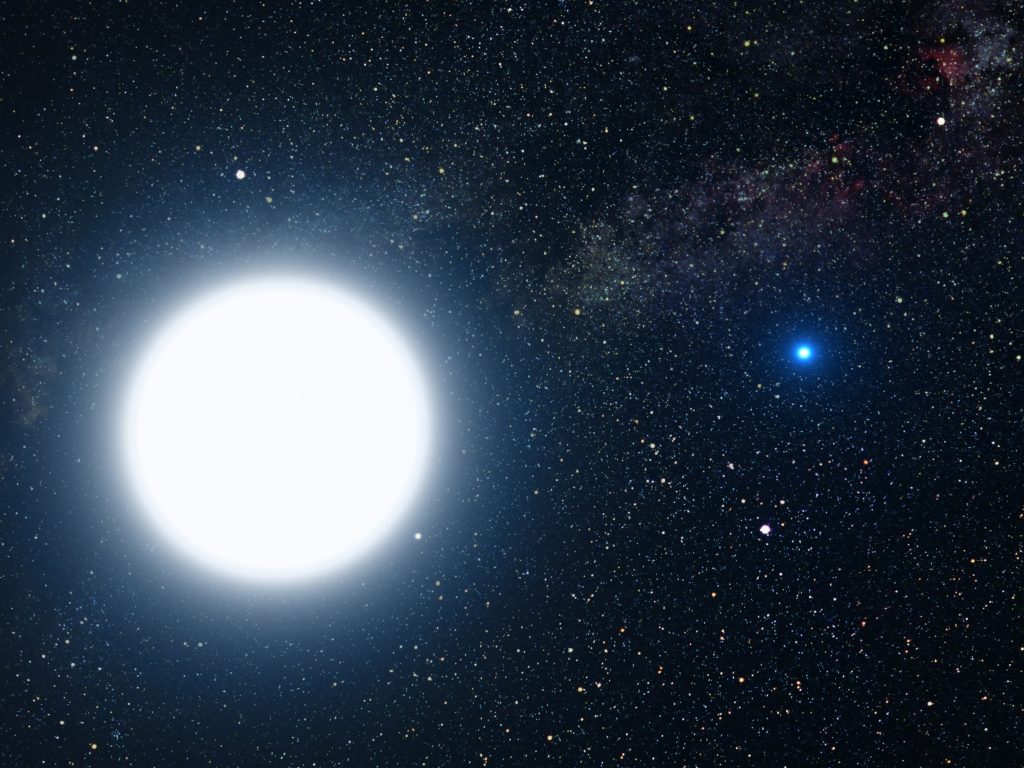Easily visible Orion constellation with Sirius star (far left). Sirius is always easily visible. It is the brightest star in the sky. Orion’s Belt – a short straight line of three moderately bright stars in the night sky always points to it.

Sirius is located in the constellation Canis Major, earning it the nickname Dog Star. When viewed from the northern hemisphere, Sirius’ path on the southern sky cuts across the horizon in an arched manner. When viewed from the southern hemisphere, it swings high overhead.
Sirius often flickers with many colors, especially noticeable when it is low on the horizon, earning Sirius the nickname the Rainbow Star. A series of small dots close together in vibrant rainbow colors. Amanda Cross in the UK captured these images of Sirius. She wrote: “The camera captured colorful flashes as the atmosphere split the starlight.

No color adjustments were made to this image. This is how the camera captured the colors. Brightness, twinkling, and color changes sometimes lead people to report Sirius as a UFO! In reality, these changes simply occur when such a bright star, like Sirius, passes through the cover of the Earth’s atmosphere. Different densities and temperatures of the Earth’s air affect the starlight, especially when observing the star low in the sky.
Twinkling and color changes also occur in other stars, but in Sirius, these effects are more pronounced because it is so bright. In the mid-northern latitudes, such as our area, Sirius rises in the southeast, arcs across the southern sky, and sets in the southwest. From the southern hemisphere, Sirius arches high above the horizon.
What the Egyptians Thought of Sirius
In ancient Egypt, the name Sirius referred to its nature as burning or sparking. The star was associated with Egyptian gods Osiris, Sothis, and other deities. The ancient Egyptians noticed that Sirius rises just before the Sun every year, right before the annual flooding of the Nile River. Although the floods could bring destruction, they also brought new soil and new life. Osiris was the Egyptian god of life, death, fertility, and the rebirth of plants along the Nile. Sothis – which might have an even closer connection to the star Sirius – began in Egypt as an agricultural deity, also closely linked to the Nile. The new Egyptian year was celebrated with a festival known as the Arrival of Sothis.
Why Sirius is Also Called the Dog Star
Sirius is well-known as the Dog Star because it is the principal star of the constellation Canis Major, the Great Dog. Have you ever heard someone talk about the dog days of summer? Sirius, when observed from Earth, is behind the Sun in the summer in the northern hemisphere. By late summer, it appears in the east just before sunrise, close to the Sun in our sky. Ancient astronomers might have imagined that the combined influence of Sirius and the Sun caused hot weather, known as dog days.
Sirius as the Dog of Prince Yudhishthira
In India, Sirius is sometimes known as Svana, the dog of Prince Yudhishthira. The prince and his four brothers, along with Svana, embarked on a long and arduous journey to find the celestial kingdom. However, one by one, all the brothers abandoned the quest until only Yudhishthira and his dog Svana remained. They eventually reached the gates of heaven. The gatekeeper Indra welcomed the prince but denied entry to Svana. Yudhishthira was dismayed and told Indra that he could not leave his loyal servant and friend. His brothers, Yudhishthira said, gave up the journey to heaven to pursue the desires of their hearts. But Svana, who had


